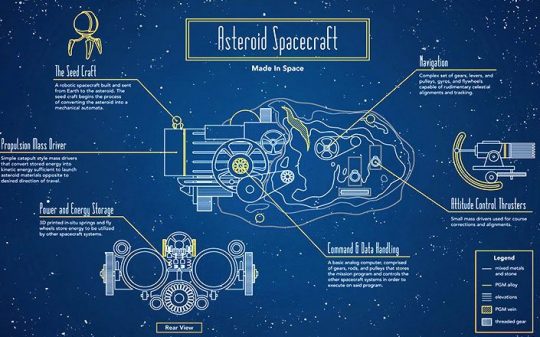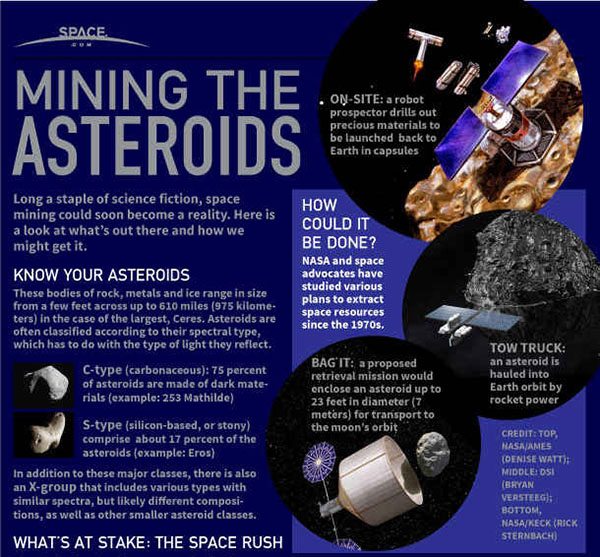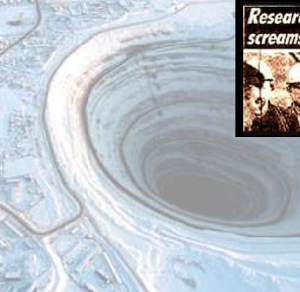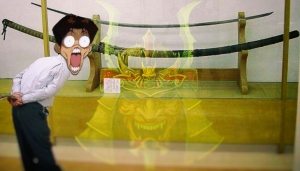NASA has recently awarded a grant to California-based company Made in Space, in an effort to determine whether asteroids could be turned into craft capable of traversing interplanetary space.
Asteroids are a big deal, and not just in the cataclysmic, purveyor of planet-wide death sense. Scientists believe that, along with comets, asteroids provided young Earth with the elements needed to spawn and sustain life. During an event known as the Late Heavy Bombardment, a large number of asteroids was running amok in the early Solar System and many of them crashed into Earth and the other rocky planets. The majority of heavy metals that made possible Homo sapiens’ technological ascension from the Stone Age can be traced back to those resource-laden planetary pummelers.
As we continue our journey into the space age, mankind sets its eyes on far horizons, but as our hopes and expectations grow, so does our need for resources. Scientists speculate that the next Gold Rush will take place in outer space, focusing on asteroids rather than hills or riverbeds. Analysis shows asteroids are abundant in raw materials and they’re not that hard to find either.
Based on this philosophy, Made in Space are developing a project called RAMA (Reconstituting Asteroids into Mechanical Automata), which aims to ease the process of space colonization by readily-providing the resources required. Currently, the costs of getting stuff into orbit are high, and the efficiency is pretty low. Asteroid mining would make things a whole lot easier, as Made in Space co-founder and CTO Jason Dunn told Space.com:
“Today, we have the ability to bring resources from Earth. But when we get to a tipping point where we need the resources in space, then the question becomes, ‘Where do they come from and how do we get them, and how do we deliver them to the location that we need?’ This is a way to do it.”
Made in Space plan to jumpstart the operation by sending a Seed Craft to one of the asteroids located in Earth’s vicinity. Once the craft gathers enough materials, it could start building propulsion, navigation and other systems autonomously and with the aid of 3D printing. Equipped with this setup, asteroids could be remotely guided to mining stations in Earth’s orbit or anywhere else, for that matter. The probe would then fly to its next set of targets, slapping rudimentary thrusters and stabilizers on them and sending them our way.
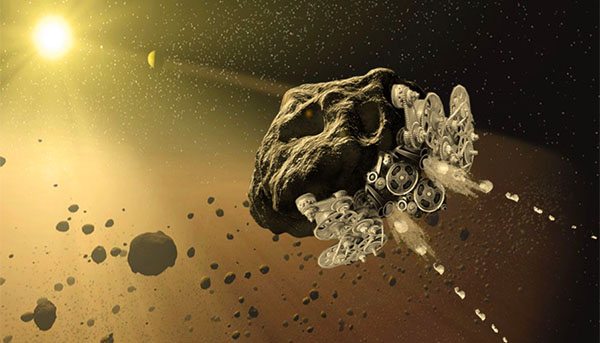
Dunn pointed out these cosmicpunk vessels won’t resemble traditional spacecraft as we’ve come to know them. The asteroids’ momentum isn’t going to be delivered by rockets, but by a catapult system that ejects chunks of space rock in a controlled fashion. Made in Space even opted not to include computers because they would require complex circuitry, the likes of which the Seed Craft won’t be able to make. Instead, they believe a mechanical computer assembled from 3D printed parts could perform the task quite well. Such computers have been around for a while (see the Antikythera Mechanism) and autonomous 3D printers can make them.
The potential benefits of this ambitious project are what caught the Space Agency’s interest. NASA’s Innovative Advanced Concepts (NIAC) Program awarded Made in Space a $100,000 grant to assess the plan’s feasibility. If they make it through, they’ll receive a Phase 2 NIAC award, worth $500,000. And there are reasons to believe the thing is indeed doable.
“At the end of the day, the thing that we want the asteroid to be is technology that has existed for a long time,” Dunn said. “The question is, ‘Can we convert an asteroid into that technology at some point in the future?'” “We think the answer is yes.”
That point in the future wont be next year, because the technology is still in its infancy and baby steps are notoriously hard to take. Current discussions are based mostly on speculation and Dunn predicts the effort will require at least two decades to mature, but by that time, asteroid mining will have evolved enough to make this venture profitable. That’s what mining is all about, right?
